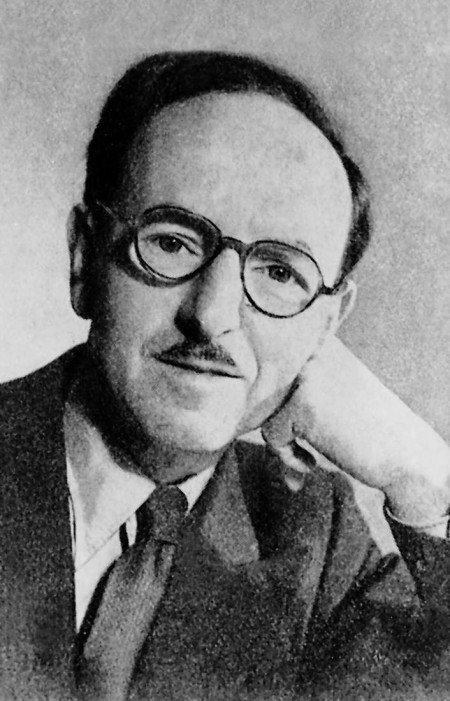
4 May 1905, Budapest - 24 September 1960, Dél-Afrika
He was a British composer and pedagogue – according to the lexicon. It is aright as the composer born in Budapest spent half of the fifty-five years of his life in the island country. His mother, Berta Patay was a reputable pianist and teacher.
The young Seiber gained considerable knowledge on that instrument first. At the age of ten he began to learn to play the cello. Parallel with his high school studies (he took the maturation exam in 1923) between 1918 and 1925 he studied cello and composition at the Academy of Music. He was studying in the preparatory class of Adolf Schiffer in 1918/1919 and then he attended the four academic classes between 1919 and 1924 (with one year interruption). According to the almanacs he began his composition studies only at the academic year of 1921/1922. He studied with Kodály except for the academic year 1922/1923 when his professor was Albert Siklós. As a degree work he wrote his String Quartet No. 1 (in A minor) that was a thorn in the Neues Pester Journal's critic's flesh. To his impermissibly written attack Kodály replied in his article titled Tizenhárom fiatal zeneszerző (Thirteen Young Composers) in which he specially highlighted Seiber: ‘Seiber got closest –following the footsteps of Mozart- to the pure chamber style.'
In 1925 Seiber accepted a teaching position at a private music school in Frankfurt. However following two years of teaching he made an unexpected decision: he hired himself on a ship that was communicating to North and South America, to play cello in its orchestra. There he was provided with the possibility of getting to know the music of ‘Black-America', the jazz.
In 1928 he returned to Frankfurt. In the following years he was a conductor in the two theaters of the city, gave cello recitals, and was cellist in the reputable Lenzewski Quartet (between 1930 and 1933). By Karl Amadeus Hartmann composer and concert booker (who did a lot for the presentation of Hungarian music in Germany) Seiber's works the Two Jazzolettes (1929) and his String Quartet No. 2 (1932) were performed at the Munich Festival.
Bernhard Sekles, director of the Hoch'sches Konservatorium invited Seiber in 1928 to be the leader of their newly organized jazz-program. That was the first high-level institution that instructed jazz according to a strict curriculum. The department was attacked several times that were rooted largely in nationalist passion, while there were others who supposed political manipulation in the background. Despite the attempts of frustration the jazz-program kept on and pursued a qualitative work during its entire existence. Seiber taught jazz piano and orchestration classes.
The majority of his publications on jazz are originated in his years in Frankfurt. Two of his articles of great importance were published in the journal Melos: Jazz als Erziehungsmittel (1928) and Jazz-Instrumente, Jazz-Klang und Neue Musik (1930). The former is dealing with the necessity and possibility of jazz-instruction. He considered reaching disengaged and free rhythm as a destination of studies on one hand, while development of improvisation skills on the other. It is necessary to be instructed – as he writes – as the art music of the twentieth century requires proficiency in rhythm largely (mentioning the music of Stravinsky, Bartók and Hindemith as examples). His text book Schule für Jazz-Schlagzeug was written in 1929, that is a practical summary of his theoretical requirements. He wrote his series titled Rhythmische Studien, and the two volumes of his dance pieces Leichte Tänze: ein Querschnitt durch die neuen Tanzrhythmen für instruktive Zwecke for his students, for piano.
Following the transfer of power of the National Socialists ‘benefactors' of the department, successful until then, caused its breakdown. They removed the professors of foreign or Jewish origin in August of 1933: the director, Sekles and thirteen professors with Seiber among them. Seiber returned to Hungary but he was not able to settle there. He worked as a music referent in the Soviet Union for two years but he was not employed after then.
He immigrated to England in 1935. He taught composition and cello privately, while working as a consultant of the subsidiary of Schott in London. He composed film music; the most significant works of him in this field are the ones composed to the Faust of Goethe and Animal farm of Orwell.
The year of 1942 was a turning point again: Michael Tippett invited him to be a professor of composition at Morley College in London. He taught also music esthetics and music theory besides composition and became a celebrated pedagogue of England soon. His interest in jazz still not declined; he was glad for the request of the London Philharmonic Orchestra to compose a jazz piece. His joint piece with alto saxophonist Johnny Dankworth Improvisations for Jazzband and Orchestra was composed in 1959.
In 1960 he was invited to a tour in South Africa and he died there due to a car accident. Several of his fellow composers reacted sensitively to the news of his death. Kodály dedicated his choral work titled Media vita in morte sumus to the memory of his former student, while Ligeti dedicated the Atmosphéres to him, and Seiber's students, Peter Racine Fricker and Don Banks, also commemorated him with compositions.
K. So.


